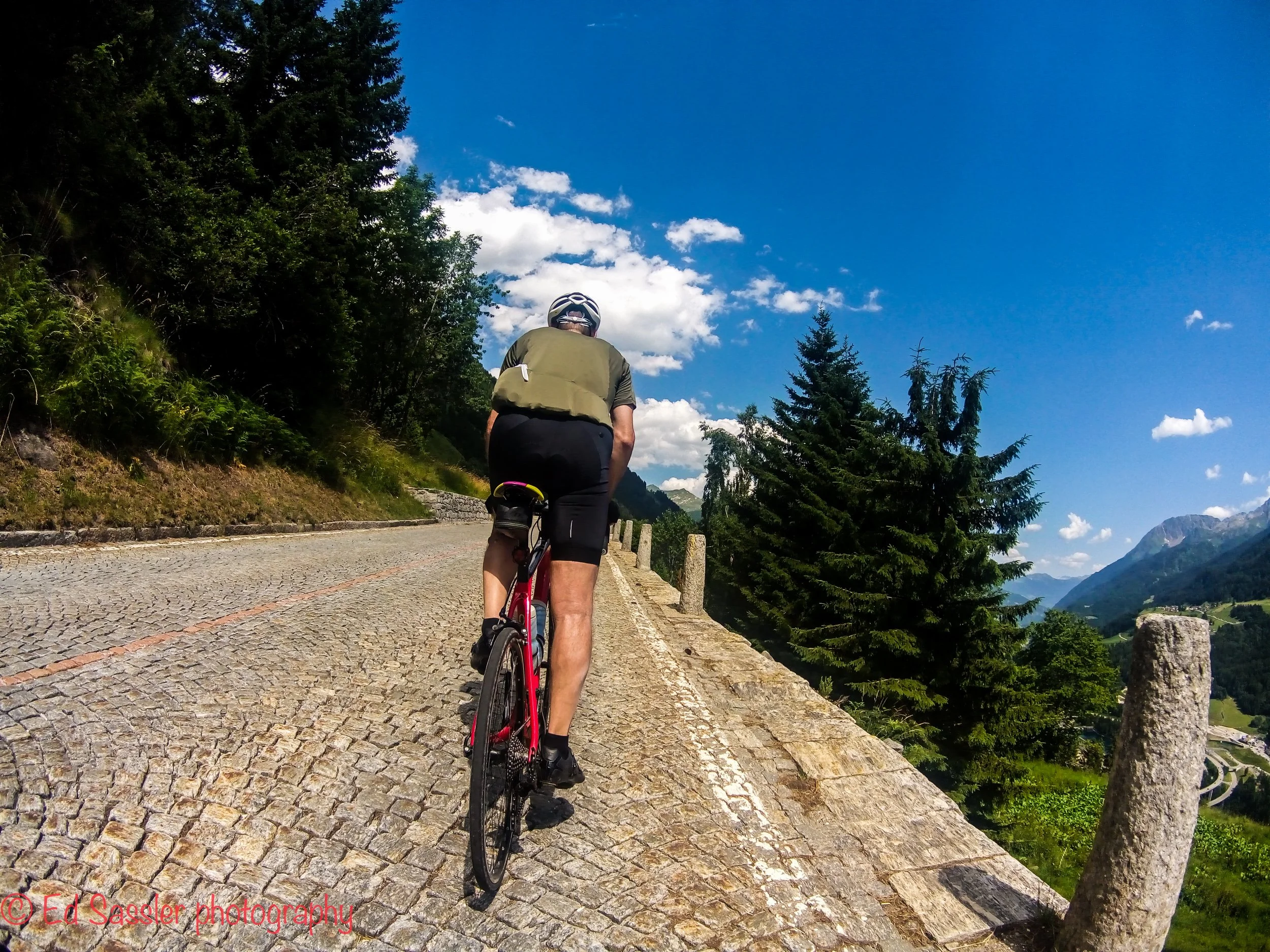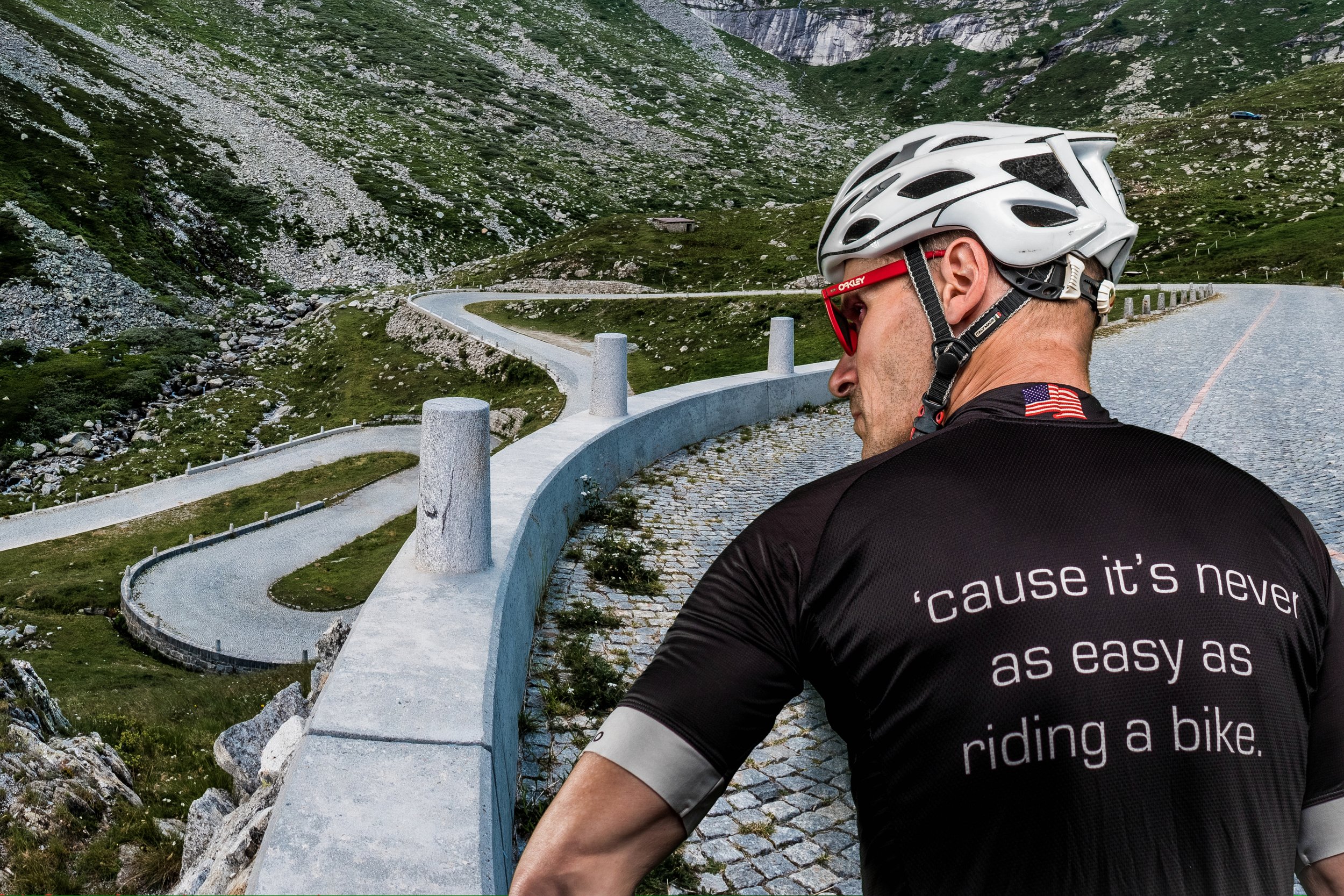The Goal
This is the goal - to triumph over gravity and distance and age. It’s a learning process that few people get right, because nobody has explained that process. In my 20+ years of coaching I have had a few unquestionable success stories. Looking back at them I have realized that it was their desire to learn, not my coaching ability that got them to their goals.
The goal of my program is to make that process more accessible. I do bike fittings in the basement of Wheelworks, it’s the first step in what should be a long learning process. Sadly, the learning usually ends there. It’s easy to schedule a bike fitting, then what? There are endless videos with lists of things you should know, or not do, but there is no curriculum, and no plan. There are also some bad assumptions made - “as easy as riding a bike” being the main culprit.
The process
No assumptions, no skipping steps.
Bike fitting.
Putting the rider within range of motion. If you’re pushing something around it’s called work. If something is taking your body beyond where it can go, it’s called injury. The damage isn’t done by the 5mm your saddle is too high or too far back, it’s your own body’s reflexes that create spikes in tension.
Getting the rider’s weight on the pedals, not the handlebars. You have learned to trust the ground you walk on or the seat you’re sitting in. The same can’t be said for a pedal that’s moving under your foot. Not trusting your pedals you look for the next solid object to support your weight - the handlebars! You probably can’t do a plank for two hours, don’t do that to yourself on a bike…
Asymmetry - this is the tricky part. In everything else you have freedom of movement at some point. When your foot leaves the ground it’s free to go where it wants. That’s called freedom of movement. No such luxury on the bike. Adjustments need to be made to adapt an asymmetric rider to a symmetric bike.
Pedal stroke program.
What goes wrong: (This is the step that every other training program skips) With the pedal at 3:00, look down at your pedal and push down on it. Which muscle group fires? If your hip moves back and you hold onto the bars to keep your position, your quad fired. Almost everybody does this because you learned how to lift your body weight for walking. Your hip is directly above your foot, the quad is the right muscle to use. Then you get on a bike, your position changes but your motor skill doesn’t. You’re using the wrong muscle. So much for “everybody knows how to pedal a bike”.
Glutes: Glutes push down, but it’s not that easy. Your go-to skill set is firing the quad and extending the lower leg from the knee. Learning how to use the glutes means first shutting down your most used skill set. It’s gonna take some time.
Quads: Quads extend the lower leg from the knee, so they push forward. The problem is the arc that your foot makes doesn’t agree with the arc the pedal goes in. You need a third muscle group to make this work.
Hip flexors: Hip flexors add the vertical component to the quads pushing forward.
Fitness program.
Fitness program comes after the pedal stroke program. If you learn how to use large muscle groups only where they are effective, you get to keep the efficiency that you built as you increase fitness. The other way around doesn’t work.
Different people respond to different types of workouts. It is important to gauge how your body is responding - you can’t train as if you were someone else.
Goals for the season: This is where you look at your plans for the season and adjust your training plan.
Putting it to use.
This is the test to see if all the testing along the way was honest and accurate.
Skills.
It’s not enough to have a good pedal stroke and good fitness, there are riding skills which neither pedal stroke work nor fitness work will teach.
Climbing skills: This is often the difference between a wonderful ride and an awful ride. Learn how to climb.
Cornering skills: This wasn’t included with the purchase of the bike, it’s a learning process.
Contact skills: If you ride with a group you will eventually make contact with another rider. If you know what to do it’s no big deal. If you freak out and crash, it’ll wreck your whole day and probably your handlebar tape.
Speedwork: Seems like something recreational riders don’t need. It’s not. Speed work is the basis for putting more power into the pedals. That feeling makes every minute of every ride feel better.
Do not assume you know this process.
Checking your progress often will either confirm that you are on track or point out the corrections needed in time. Not checking your progress could set your season back.

